Humans aren’t the only ones who can become depressed. Cats are sensitive creatures and can be thrown into the whirls of great emotions from what may seem like the tiniest triggers. Anything from the lack of a stimulating environment to a beloved family member leaving for college can cause depression in your feline friend.
Since most of these symptoms can also be signs of other underlying health problems, a visit with your veterinarian is recommended if you notice any of them. Ruling out another health problem and creating a plan for helping your cat cope with stress is the key to getting her health and happiness back on track.
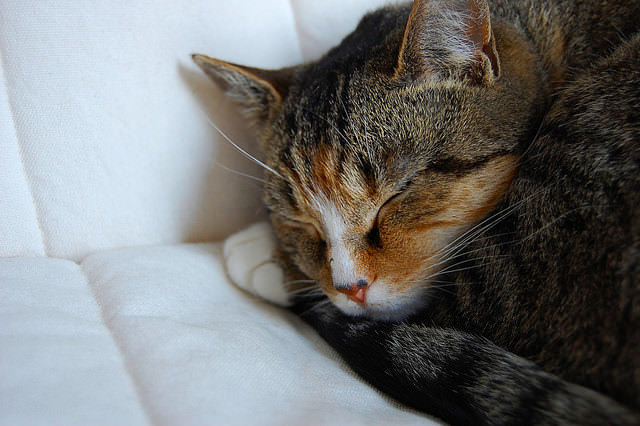
Image Source: Holly Zade via Flickr.com
#1 – Lethargy
Cats are famous for their unwavering dedication to sleep, but an emotionally and physically healthy cat also enjoys occasional spurts of activity. A cat who is feeling well will want to stretch, play, explore, and hunt. Depression may be a factor if your cat is sleeping more than normal and uninterested in the things that normally excite her.
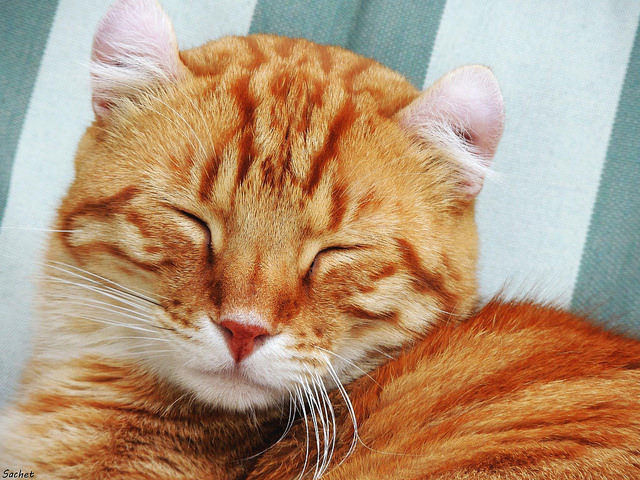
Image Source: Sachet Dube via Flickr.com
#2 – Lack of Appetite
A healthy cat will also have a healthy appetite. Mealtime is the most exciting time of the day for most cats. In fact, many cats get so excited about mealtime that they circle around our legs as soon as the can lid pops, as if they haven’t eaten in years. Depressed cats, however, often lack appetites and excitement about food– even when you break out the smelliest varieties.
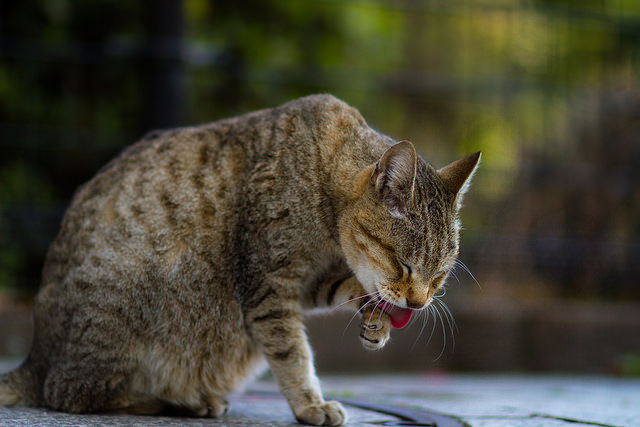
Image Source: Takashi Hososhima via Flickr.com
#3 – Over or Under Grooming
A change in grooming habits can be a sign of depression. Some depressed cats will stop grooming altogether (or at least stop doing an effective job at it), which can result in an oily coat, dandruff, a messy booty, or knots in long hair. Conversely, a cat who is depressed may also over groom, leaving bald patches, irritated skin, or even open wounds.
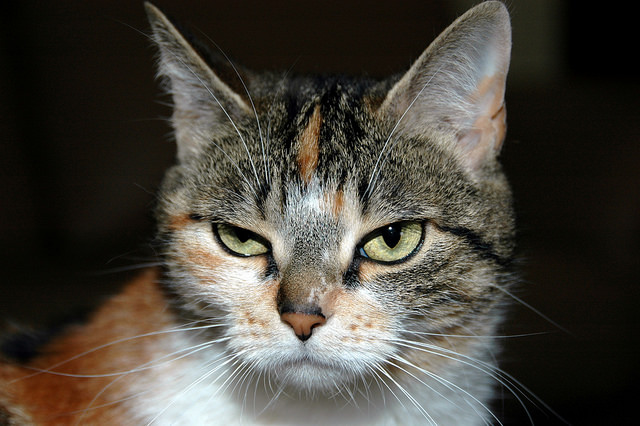
Image Source: storem via Flickr.com
#4 – Hiding or Avoiding Affection
Some cats are naturally shy or not keen on cuddling– qualities that aren’t in and of themselves signs that something is wrong. However, take it as a red flag if your normally-social cat becomes withdrawn. Depressed cats may hide to ensure they won’t have to deal with the people or other animals in your household. A depressed cat may also relocate if you sit beside her, or flinch or swat when you try to show her affection and attention.
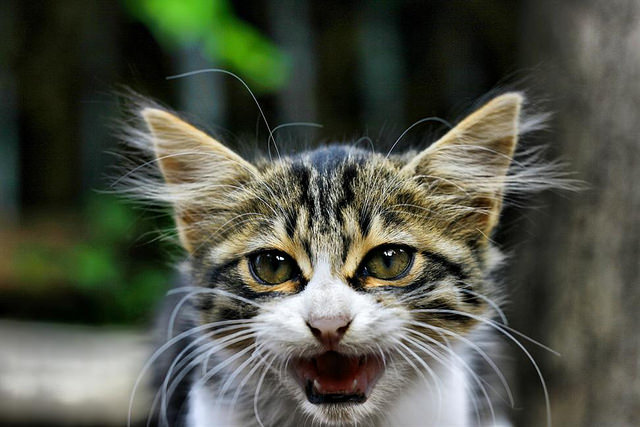
Image Source: Omer Unlu via Flickr.com
#5 – Excessively Vocal
You can learn a lot by listening to the way your cat chooses to be vocal since different types of sounds mean different things. A depressed cat may become excessively vocal, but not with happy meows. Instead, she may express her discontent through yowls, which may happen more at night when your household is trying to sleep.
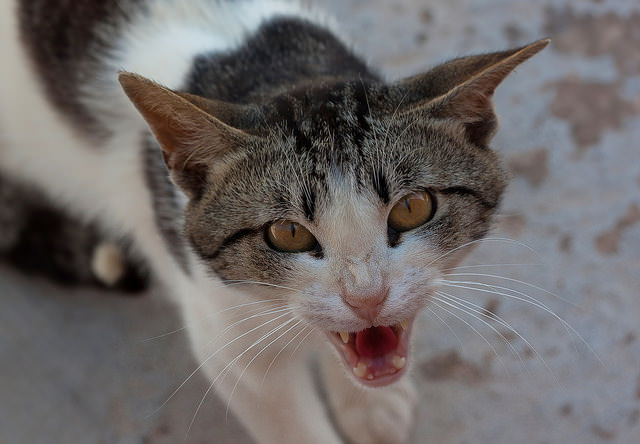
Image Source: Orias1978 via Flickr.com
#6 – Aggression
Depression can make even the sweetest cats feel irritable and on edge. Cats who aren’t feeling well will generally want to be left alone. This can result in hisses, growls, and attacks for anyone who doesn’t respect a depressed cat’s space.
